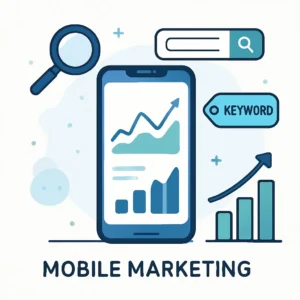

Core Web Vital
In today’s digital world, user experience is a key determinant of success for any online business or platform. With Google’s increasing focus on delivering a better user experience, it introduced Core Web Vitals (CWV) as part of its ranking factors.
This means that optimizing for Core Web Vitals is essential for websites that want to rank higher in search engine results pages (SERPs). These metrics, which focus on load speed, interactivity, and visual stability, can significantly impact how users engage with your site. In this article, we will dive into what Core Web Vitals are, their importance in SEO, and how to optimize them effectively.
Table of Contents
ToggleWhat Are Core Web Vitals?
Core Web Vitals are a set of specific factors that Google considers crucial in a webpage’s overall user experience. These factors are part of Google’s larger Page Experience signals, and they currently include three primary metrics:
1.Core Web Vitals are a set of specific factors that Google considers crucial in a webpage’s overall user experience. These factors are part of Google’s larger Page Experience signals, and they currently include three primary metrics:
2.Largest Contentful Paint (LCP): This metric measures the loading performance of the largest visible content element (such as an image or block of text) on the screen. Ideally, LCP should happen within 2.5 seconds of when the page starts loading.
3.Cumulative Layout Shift (CLS): CLS evaluates visual stability by measuring how much the layout shifts unexpectedly during the loading process. A good CLS score is less than 0.1.
These metrics are now part of Google’s ranking algorithms, meaning they directly influence your SEO performance. But why are they so important ?
1.User Experience:
At its core, SEO is not just about search engines, but also about optimizing websites for users. Pages that load faster, are responsive, and visually stable create a seamless user experience, reducing bounce rates and increasing engagement.
2.Ranking Factor:
Since June 2021, Core Web Vitals have become an official Google ranking factor. Pages that perform well in these areas are more likely to rank higher, particularly in competitive industries where small ranking boosts can make a significant difference.
3.Improved Conversion Rates:
Pages that provide a better user experience (measured through Core Web Vitals) tend to have higher conversion rates. Users are more likely to stay on your site, browse multiple pages, and convert into paying customers when the website is smooth and responsive.
4.Improved Conversion Rates:
Pages that provide a better user experience (measured through Core Web Vitals) tend to have higher conversion rates. Users are more likely to stay on your site, browse multiple pages, and convert into paying customers when the website is smooth and responsive.
Optimizing for Largest Contentful Paint (LCP)
LCP measures how long it takes for the largest piece of content (image, video, or text) to load. If this takes too long, users may leave the site before they even see it. Below are steps you can take to improve LCP.
1.Optimize Server Response Time:
A slow server response can delay content loading. Reduce server latency by using a high-quality hosting provider and optimizing server configurations.
3.Use a Content Delivery Network (CDN):
CDNs help distribute your website’s content across multiple servers worldwide, ensuring users access the nearest server and reducing load times.
4.Minimize Render-Blocking Resources:
JavaScript and CSS files can delay the rendering of your page’s content. Ensure only the critical CSS is loaded first, and defer non-critical JavaScript to after the main content has loaded.
5.Minimize Render-Blocking Resources:
JavaScript and CSS files can delay the rendering of your page’s content. Ensure only the critical CSS is loaded first, and defer non-critical JavaScript to after the main content has loaded.
Optimizing for First Input Delay (FID)
FID measures how quickly a site responds to a user’s first interaction (like clicking a button or link). Delays here can frustrate users, leading to poor engagement. Here’s how to reduce FID:
1. Minimize JavaScript Execution Time:
JavaScript files are often the culprit behind poor FID scores. Break up large JavaScript bundles into smaller chunks and remove unnecessary JavaScript.
2. Defer or Remove Non-Critical Third-Party Scripts:
External scripts (e.g., ads, tracking, or social media buttons) can block a site’s interactivity. Defer non-essential scripts until after the page is interactive, or remove them entirely if they don’t contribute much to the user experience.
3. Optimize Web Workers:
Web Workers can run JavaScript scripts in the background without blocking the main thread, which can help reduce FID. Use them to handle heavy computations or resource-intensive tasks without affecting the interactivity of the page.
Optimizing for Cumulative Layout Shift (CLS)
1. Include Size Attributes for Images and Videos:
Always define size attributes for images and videos in the HTML or CSS. This reserves the correct space during loading and prevents shifts once the media loads.
2. Preload Fonts:
Loading custom fonts can cause layout shifts, particularly when they’re loaded after the initial rendering. Use font-display: swap to ensure the text is visible even if the custom font hasn’t fully loaded yet.
3. Avoid Inserting Content Above Existing Content:
Inserting new content dynamically above existing content (such as ads, banners, or pop-ups) can cause unexpected layout shifts. Always reserve space for such elements or load them below the fold to avoid impacting the user experience.
4. Use CSS Transitions and Animations Wisely:
Animations or transitions that alter the position of elements can create layout shifts. Always test how animations impact CLS and make adjustments accordingly.
Tools for Measuring and Optimizing Core Web Vitals
To optimize Core Web Vitals, you first need to measure them accurately. Google offers several tools to help with this
1. Google PageSpeed Insights:
This tool provides an in-depth analysis of your website’s performance, including Core Web Vitals metrics. It also offers recommendations for improving these scores.
2. Google Search Console:
The Core Web Vitals report in Search Console gives you an overview of how your entire website performs based on real-world data from the Chrome User Experience Report.
3. Lighthouse:
Available in Chrome DevTools, Lighthouse is a performance audit tool that provides insights into your site’s Core Web Vitals and other SEO-related metrics.
4. Web Vitals Chrome Extension:
This extension provides a real-time overview of your Core Web Vitals while you browse your site.
Conclusion
Optimizing Core Web Vitals is essential for ensuring a strong user experience and maintaining good SEO performance. As these metrics directly affect search rankings, focusing on improving LCP, FID, and CLS is key to outperforming competitors and keeping users engaged with your website. By leveraging the right tools and best practices, you can enhance your site’s performance and stay ahead in the ever-evolving world of SEO.






















Post Comment